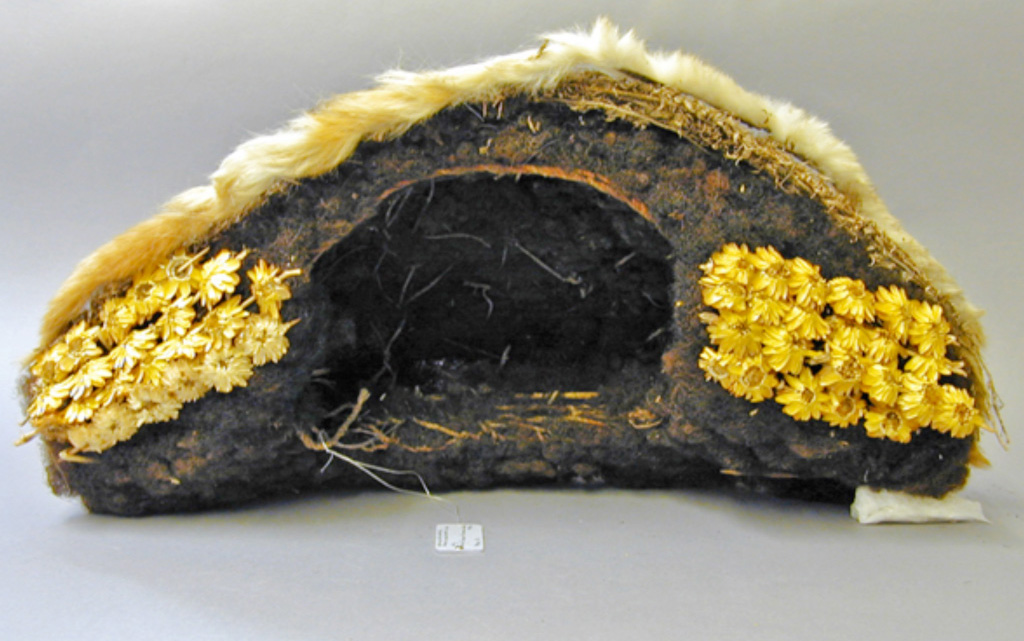Man's wig
Papua New Guinea
 Wig made by Ariwari, a young married man. Purchased for the Museum from Sister Filumena Light of the Catholic Mission at Koroba in 1980; 1980.3.1
Wig made by Ariwari, a young married man. Purchased for the Museum from Sister Filumena Light of the Catholic Mission at Koroba in 1980; 1980.3.1
Many of the tribes of Papua New Guinea, especially the younger generations, wear Western-style clothing but traditional items of dress, such as this wig, are often retained for special occasions.
Wigs of this type, made from human hair and decorated with everlasting flowers used to be worn as part of everyday dress by Huli men, the Huli being the largest ethnic group in Papua New Guinea’s Southern Highlands Province. In the past, young Huli men used to enter the haroli cult when they spent months in seclusion, learning rituals designed to protect themselves from women, who are thought in certain circumstances to be polluting and injurious to young men’s growth.
While in seclusion, young men would grow their hair. Initially, they would shape their hair into a down-turned crescent, like this wig. Later it would be re-shaped into an upturned crescent and coloured red. On leaving seclusion, young men would cut their hair, and make two replica wigs, one down-turned, like this one and for everyday wear, the other upturned and coloured red, for ceremonial occasions.
Many Huli today have long converted to Christianity and the haroli cult has died out. However, wigs of both types continue to be worn on special occasions, including for shows and events intended for tourists. The striking nature of their wigs has meant that photographs of Huli men have often been used in promotional literature to represent everything that is different and exotic in Papua New Guinea as a whole. This visual prominence has in turn helped the Huli in their wish to secede from the Southern Highlands Province and constitute a new province, Hela Province, due to come into being in 2012.
